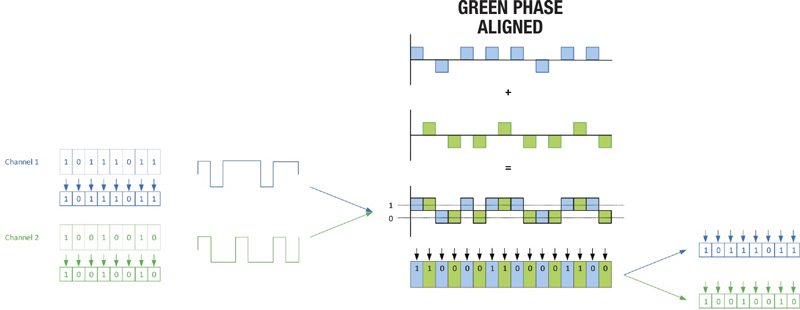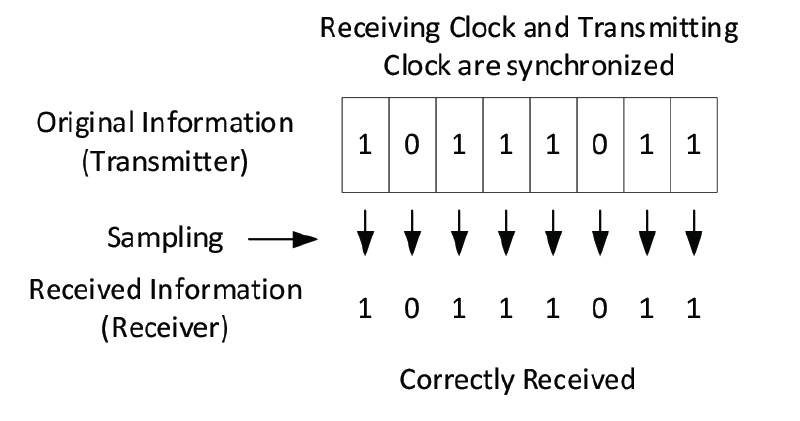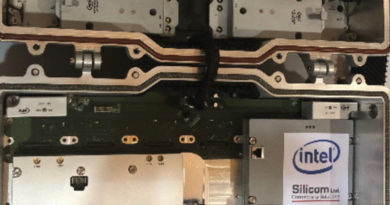DOCSIS Time Protocol and Support of Wireless Access
By Charles Cook
Cable operators have deployed DOCSIS networks for many years to provide wireline access for their customers. Operators’ interest has grown in deploying and backhauling their own 5G wireless access networks using their DOCSIS infrastructure. Base stations in these 5G wireless networks require accurate synchronization of both time frequency and phase to a grand-master clock.
IEEE 1588 Precision Time Protocol (PTP) is a standard that establishes frequency and phase synchronization on non-deterministic Ethernet links, but was not designed for DOCSIS networks. DOCSIS Time Protocol (DTP) solves many issues that enable DOCSIS networks to effectively deliver PTP to wireless base stations. Implementing DTP is challenging, but work progresses to enable the frequency and phase timing accuracy required for supporting 5G wireless base stations on DOCSIS networks.
Timing and synchronizations needs
Several cable operators have recently acquired CBRS spectrum licenses to deploy time division duplex (TDD) 5G base stations. Base stations that are deployed outdoors can be oriented to be line-of-sight with GPS satellites for reception of timing signals. If line-of-sight cannot be achieved, as in the case of indoor base stations (e.g., femtocells), an alternative timing source with 1.5 µs accuracy is needed. PTP can provide this level of accuracy.
When DOCSIS is lightly loaded, it has been demonstrated that it is possible to support PTP “over-the-top” of DOCSIS. But because DOCSIS was not specifically developed with highly accurate PTP in mind, a highly loaded system will not be able to support PTP to the accuracy levels required by TDD 5G base stations without the use of DTP.
DTP establishes PTP-to-DOCSIS interfaces at the cable modem termination system (CMTS) and cable modem (CM) which creates a timing bridge between them. The CM regenerates PTP and sends it to the base station. Figure 1 shows PTP and DTP relative to a DOCSIS system. Components of a generalized DOCSIS system are shown in green.

Figure 1. PTP and DTP on an I-CMTS architecture
The CMTS uses the ranging capabilities of DOCSIS and delays through the CMTS and CM to calculate timing offsets for an accurate PTP time stamp at the CM.
The importance of time frequency/phase and synchronization
Time frequency synchronization — A transmitter maps bits into 8-bit bytes so that multiple transmissions are multiplexed on the same channel. The transmitter uses a clock, at a predetermined time frequency to determine when to transmit the bits. The receiver samples the information at exactly the same time rate. If it doesn’t, it may sample the same bit more than once (sampling at higher frequencies), or a bit may not be sampled at all (sampling at lower frequencies). The impact of this frequency synchronization is illustrated in Figure 2.

Figure 2. Frequency synchronization
Phase synchronization — Phase synchronization aligns each transmission when multiple transmitters share the same channel. The transmissions are mapped into non-overlapping timeslots to avoid transmission collisions. This is known as a time division multiple access (TDMA) system. For TDMA to work, transmissions in one timeslot must not overlap transmissions in another timeslot.

Figure 3. Phase synchronization

Figure 4. Lack of phase synchronization
With DOCSIS, there are multiple CMs transmitting on a shared channel. It is essential that the transmissions are both frequency and phase synchronized. The CMTS uses media access control (MAC) management messages so that their transmissions do not interfere with other CM transmissions.
Precision time protocol
One limitation of Ethernet is its non-deterministic nature, which makes it unable to support applications requiring accurate synchronization such as LTE and 5G. TDD base stations must be synchronized to within 3 µs of each other, requiring each base station to be within 1.5 µs of a primary reference time clock (PRTC) [1]. To address this requirement, PTP (IEEE 1588) [2] was developed and specifies frequency and phase synchronization across Ethernet transmission links using time stamps to address latency and jitter issues. PTP enables Ethernet for use as a backhaul link in 3GPP LTE and 5G systems.
DOCSIS time protocol
DTP was introduced in DOCSIS 3.1 to reliably support PTP on DOCSIS networks. DTP allows the timing and frequency system of the CMTS, the hybrid fiber/coax (HFC) plant and the CM to be a timing bridge that accurately takes the PTP timing source at the input of the CMTS and replicates it at the output of the CM with the correct timing offsets to take into account all the delays through the DOCSIS system.
To do this, the CMTS receives a PTP timestamp on a PTP slave port and synchronizes its internal clock to that timestamp. The CMTS synchronizes all DOCSIS timestamps to its internal clock, which makes the DOCSIS timestamp traceable to a PTP timestamp.
DTP also provides a signaling path that determines the downstream timing offset to compensate for delays through the DOCSIS system. The timing offset is used as a correction factor for the PTP timestamp at the CM. The DTP runs between the CMTS and the CM. It sends the CMTS timestamp value to the CM, calculates the delay in the downstream path, and adds the delay to the CMTS timestamp value to generate the value for the CM PTP timestamp [3].
DTP challenges
To provide an accurate PTP timestamp at the output of the CM, the delay through the system has to be measured. The general approach in timing systems is to measure the round-trip delay, and divide by two to derive the one-way delay.
To generate the proper offset for the PTP timestamp at the CM output, the delay between the PTP input at the CMTS through the DOCSIS HFC network to the CM PTP output must be understood.
In DOCSIS, the MAC protocol uses a ranging procedure to determine the timing offset of each CM from the CMTS, so that packets sent from CMs at different distances appear at the CMTS without overlapping timeslots.
However, additional delays internal to the CMTS and the CM are still unknown and may change with configuration changes. These values must also be measured so that the timing offset of the DOCSIS system can be calculated for the PTP timestamp at the output of the CM. Unfortunately the delays of the CMTS and CM by themselves cannot be measured because there is no accessible timing test point. Additionally, the use of interleavers, a mechanism used for forward error correction in DOCSIS, obscures establishing a test point to measure these delays. Specialized test equipment to make these measurements currently does not exist.
Summary
Some cable operators plan to deploy their own wireless networks using existing DOCSIS infrastructure for backhaul. Accurate time frequency and phase are required in wireless base stations, and extremely accurate timing is required in TDD wireless base stations. PTP is a protocol that supports frequency and phase requirements necessary for 5G wireless base stations and DTP is the means by which DOCSIS networks are enabled to deliver PTP to them. DTP has some challenges to overcome; either specialized test equipment must be developed, or an alternative algorithm must be created to automate offset calculations in DTP.
References
[1] LTE; Evolved Universal Terrestrial Radio Access (E-UTRA); Requirements for support of radio resource management (3GPP TS 36.133 version 16.7.0 Release 16)
[2] IEEE 1588-2008 — IEEE Standard for a Precision Clock Synchronization Protocol for Networked Measurement and Control Systems
[3] CM-SP-SYNC-I01-200420 — Synchronization Techniques for DOCSIS® Technology Specification

Charles Cook,
Principal Architect,
Charter Communications, Inc.
charles.cook@charter.com
Charles Cook began his telecom and cable industry career in 1985. He holds the position of Principal Architect in the DOCSIS Advanced Engineering group at Charter Communications Inc. He is one of the lead architects working on the development and evolution of Charter’s access architecture, wireless convergence, technology strategy and roadmaps. As an inventor and innovator, Charles has been awarded with over 100 patent grants. Charles holds a Bachelor of Engineering Degree and a Master of Engineering Degree in Electrical Engineering.



